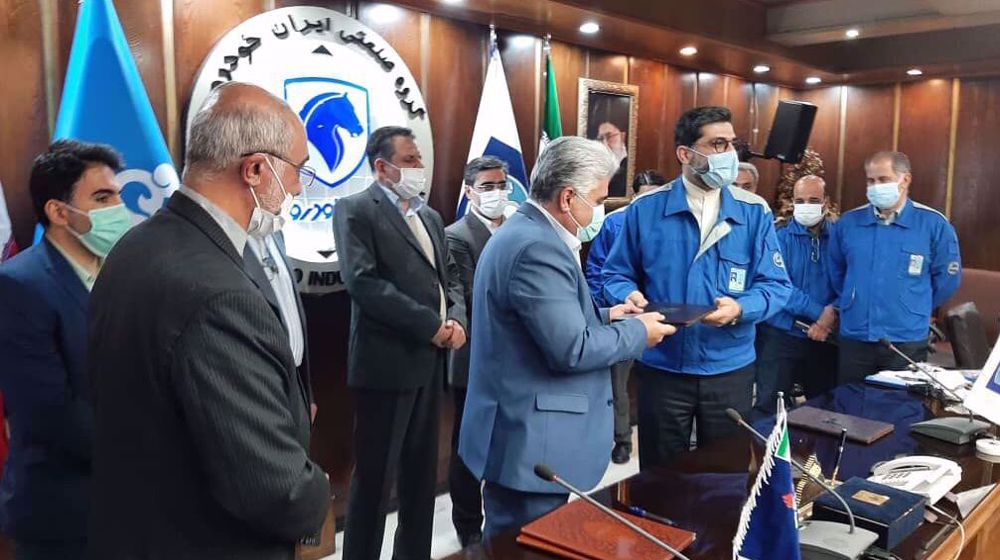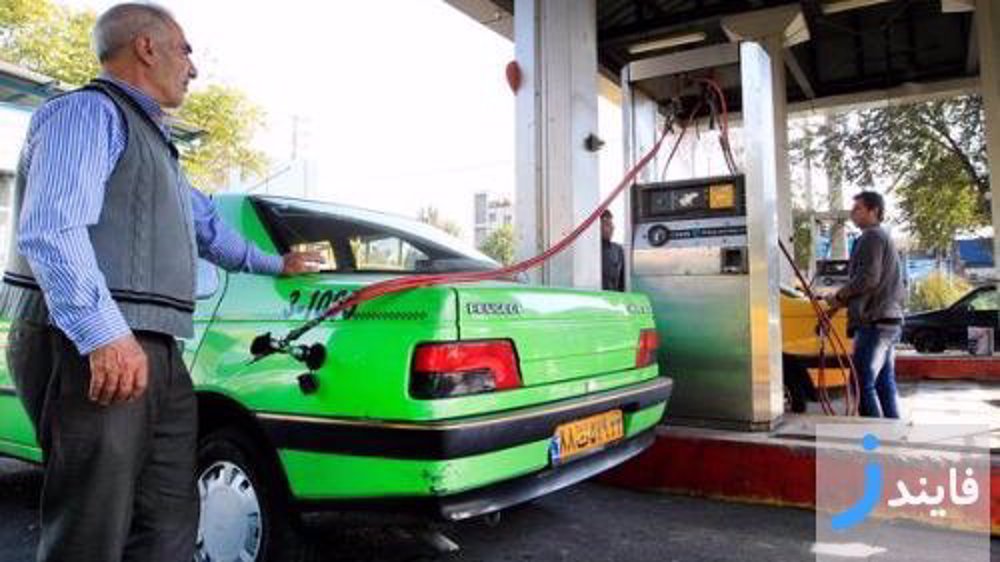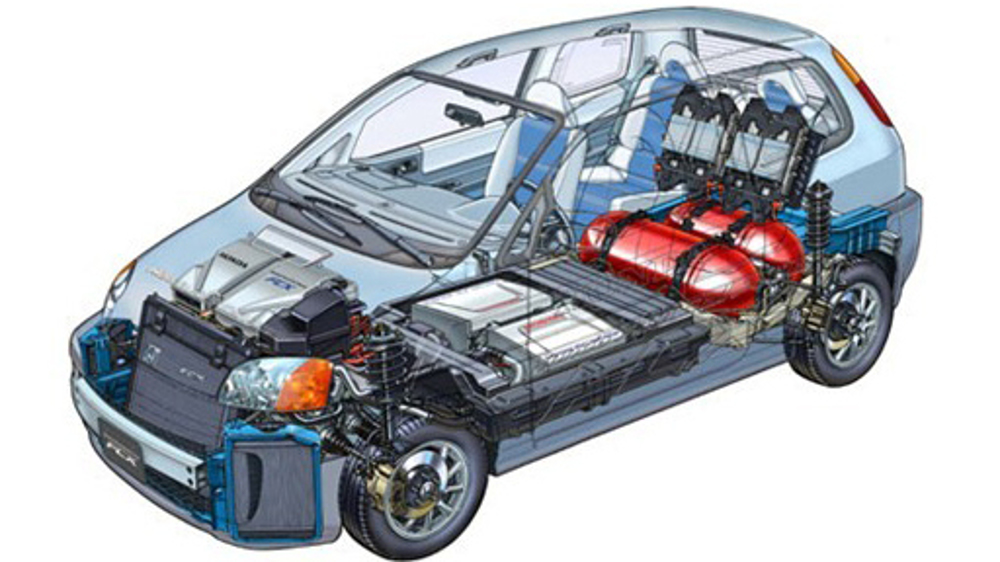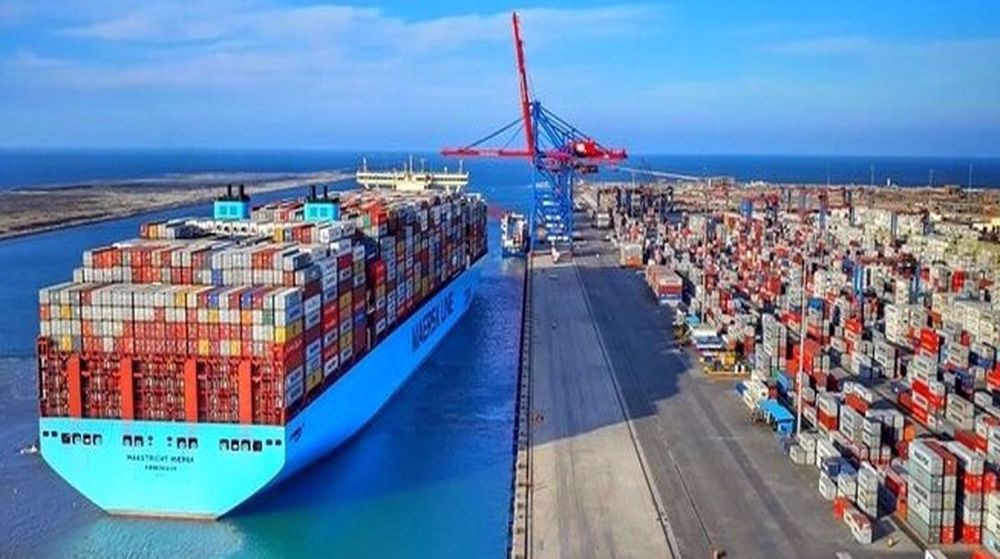Iran's bi-fuel vehicle fleet is the world's largest
The contract signed between the Ministry of Petroleum and Iran Khodro on Sunday to produce 45,000 bi-fuel cars signals Iran's expansion of its world's largest fleet of vehicles running on either petrol or natural gas.
Signed between the National Iranian Oil Products Distribution Company (NIOPDC) and the country's biggest automaker, it is in line with the state plan pushing motorists to use cheaper, cleaner and plentiful natural gas.
It "is based on the decision of the Supreme Economic Coordination Council to support production and conversion of gasoline-powered public vehicles, taxis, vans, pickup trucks and passenger cars to CNG-burning equivalents with the aim of increasing revenues from gasoline sales and observing civil rights and environmental requirements," the Ministry of Petroleum said in a statement.
Under the scheme, Iran Khodro will produce 40,000 taxis and 5,000 pickup trucks that will be powered by either gasoline or compressed natural gas (CNG).

The government is subsidizing and providing low-interest installment plans for conversion systems.
The Ministry of Petroleum will pay $505 for production of each dual-fuel pickup truck and $425 for each taxi compliant with Euro 4 and Euro 5 emissions standards, it said.
Natural gas is a cleaner-burning, less costly fuel than gasoline, and vehicles powered by compressed natural gas typically emit 20 percent less greenhouse gases than gas-powered cars.
Iran boasts the largest number of CNG vehicles where more than 4 million compressed natural gas cars operate against more than 16 million globally. There are currently about 2,500 CNG stations mostly operated by the private sector across Iran that supply 22% of the country’s fuel basket.
According to NIORDC, each cubic meter of CNG consumption saves the consumer 30 cents in comparison to one liter of gasoline. Its former head Alireza Sadeqabadi was quoted as saying in March that developing the CNG industry could potentially save Iran $14 billion.
Sadeqabadi said Iran would need at least $15 billion of investment to boost its gasoline production capacity by 20 million liters, but an equivalent CNG output would only need $1 billion.
Iran's unlocking of its vast reserves of natural gas, estimated as the world's largest, has produced a boom in supplies and driven down prices, increasing interest in the fuel.
Most bi-fuel cars plying Iran's roads are fleet vehicles such as cabs and pickup trucks, but natural gas as a motor fuel also represents a huge and largely untapped opportunity for commercial fleets and long-haul truckers.

Cars powered by natural gas feature a powertrain that switches from compressed natural gas to gasoline seamlessly. They are praised for savings on fuel, but a major drawback is driving range and reduced power anxiety associated with such vehicles.
Iranian authorities are encouraging more drivers to switch to bi-fuel systems by subsidizing vehicle conversions.
One key driver is the problem of air pollution which plagues urban areas in almost all provinces and poses a risk mainly to those suffering from pre-existing respiratory and cardiovascular conditions, children, pregnant women and elderly.
Tehran in particular is believed to be one of the most heavily polluted cities in the world. Because of its location - hemmed in by Alborz mountains on two sides - there are about 200 days in the year when atmospheric conditions trap Tehran in a pall of smog. Pollution levels can be particularly bad in winter during periods of high pressure.
The Sunday contract is also a shot in the arm of Iran's auto industry which is the Middle East’s largest and the 18th largest in the world. The country produces passenger cars, four-wheel drives, vans, trucks, buses and minibuses.
Some 14 million commercial and passenger vehicles are currently plying Iran’s roads, while its automotive sector is the country’s second most active industry behind oil and gas — accounting for 10% of its GDP and 4.0% of its workforce or 700,000 people.
With a population of nearly 80 million and a land mass the size of Western Europe, Iran is a country with huge potential, where Western sanctions have had an uncanny silver lining for domestic manufacturers.
Thanks to the sanctions, Iran's auto sector has started standing on its own feet after years of reliance on imported car kits which foreign companies stopped supplying in fear of the US punishment.
According to the former minister of industry, the total value of imported contents used in car manufacturing has been cut by $2.5 billion – a figure which is enormous at a time of severe foreign exchange crunch due to the draconian sanctions.
When the Trump administration reimposed sanctions on Iran in August 2018, it reserved Washington’s first hammer blow for the car industry to hurt as many Iranians as possible.
However, the US pressures forced domestic manufacturers to mobilize their resources to fulfill some of the tasks which were an exclusive competence of foreign companies.
Iran Khodro and Saipa are the two largest local manufacturers, which have picked up the slack since France’s Peugeot and Renault exited Iran along with other international companies after the sanctions, creating a supply crunch which saw car prices vault to unprecedented highs.
Iranian carmakers are expected to produce 1.2 million cars in the current fiscal of 1400 which ends on March 20, 2022. They are about to make 1.6 million units in 1401, Industry, Mining and Trade Minister Reza Fatemi Amin said last month.
Last month, Iran Khodro and private Iranian company Mammut Industries signed contracts to produce 6,000 trucks with the help of Chinese manufacturers.
Iran Khodro CEO Farshad Moqimi also announced the company's readiness to export dual-fuel and gasoline vehicles to Turkmenistan.
'Capitulation': Israeli officials and media concede Gaza defeat as truce unfolds
'Gaza has won': Social media users react to ceasefire with mix of relief, joy
Iran seeks South Korea’s assistance for AI, fiber-optic projects
VIDEO | Iran's 'Eqtedar' (Power) maneuver
Israel hits HTS military target in Syria for 1st time since fall of Assad
VIDEO | Press TV's news headlines
Israel has slaughtered 13,000 students in Gaza, West Bank
VIDEO | More Zionist than Zionists: Biden’s legacy to be defined by Gaza genocide










 This makes it easy to access the Press TV website
This makes it easy to access the Press TV website